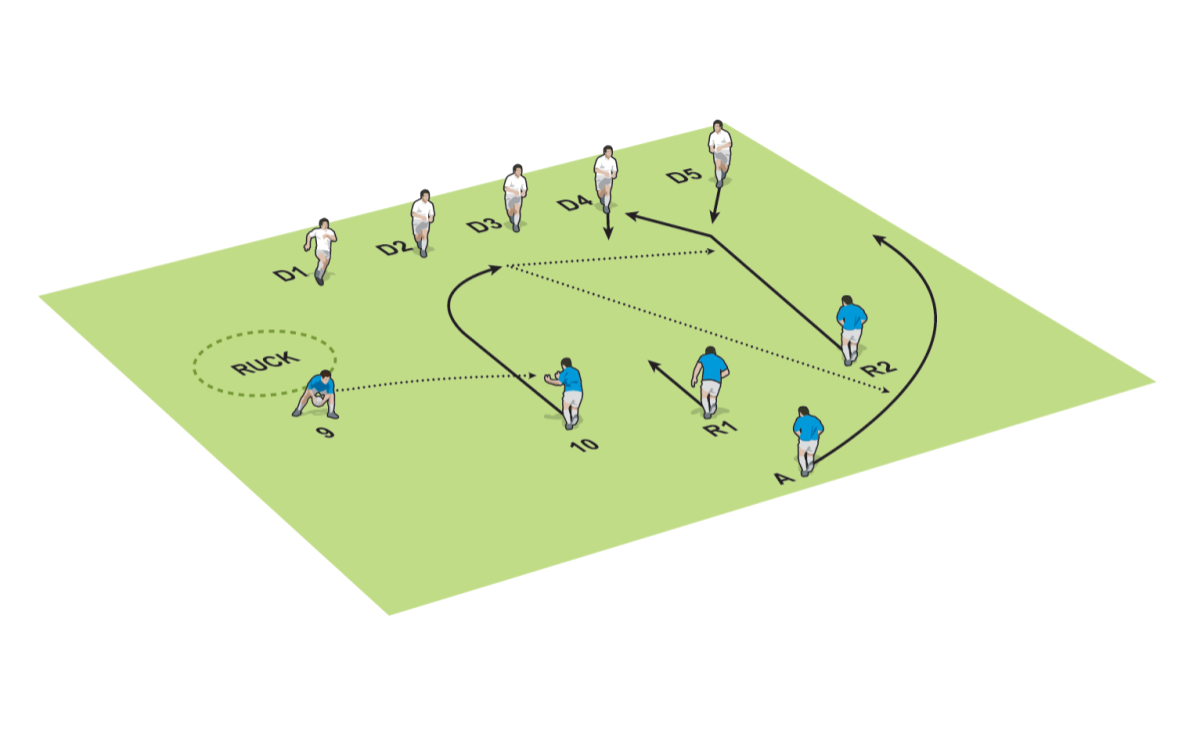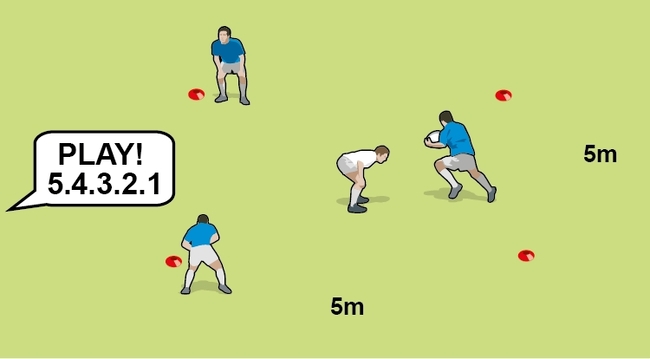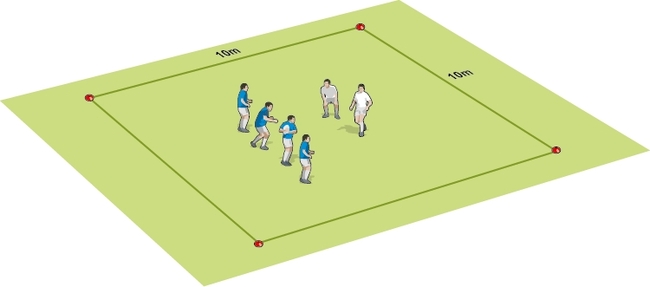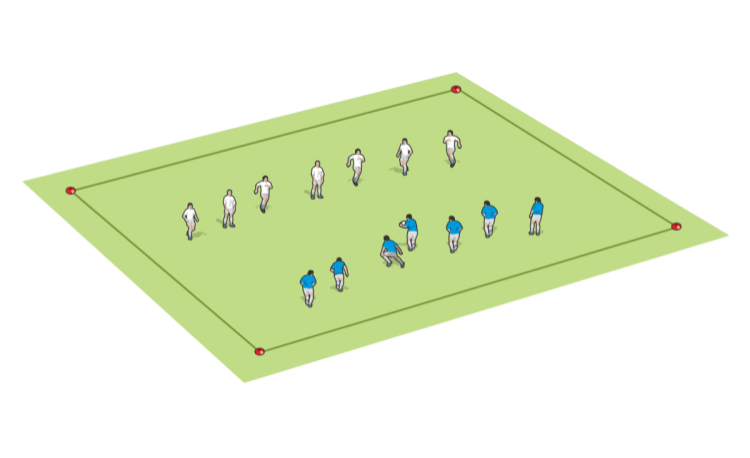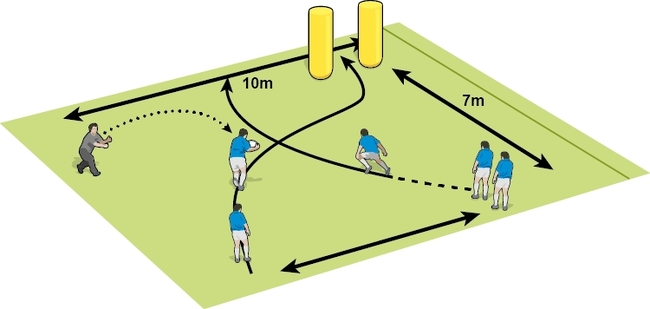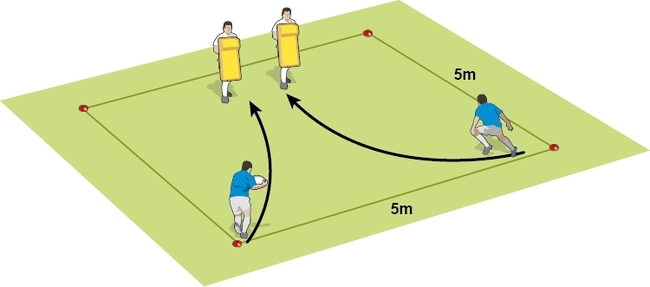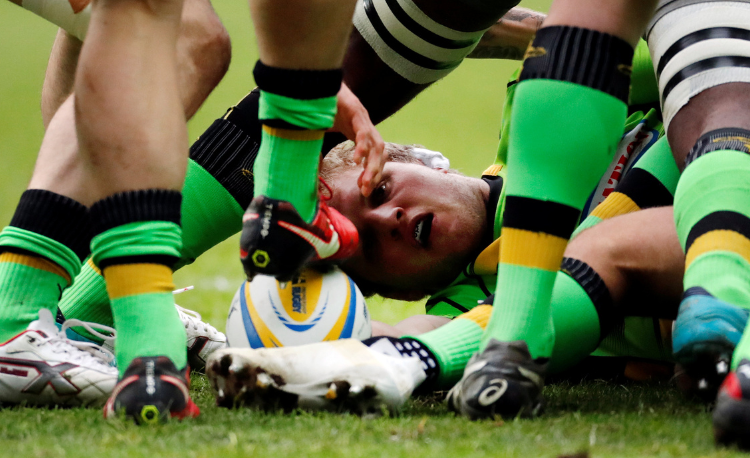Tunnel ball: the wide-pass decoy runner
Here’s how to practise a commonly used play to break outside the defence and thread the ball between them. By Wales Under-20s coach RICHARD WHIFFIN.
’Tunnel ball’ is a term used to describe a wide pass that goes in front of one player and behind another to a third attacker.
These type of passes give the pass receiver an opportunity to break on the outside of the defence.
It can be used from a set-piece strike, most often passing between the centres to a winger, or in phase-play shape, using forwards as the decoy runners to a quick outside back loaded up behind the forwards.
It is often a better option than just passing the ball deep behind two decoys, as it cuts down the time the defence has to adjust on the pass.
The pass receiver is also flatter and closer to the defensive line putting the defence under more decision making pressure.
- 10 attacks the line and then angles off to open to pass to either R2 or A
- A stays hidden behind R1 and aims to get behind R2 just as they cut in at the line
- R1 must engage the defence but not get too flat and so block a pass to A
- R2 attacks the line and cuts in as the pass is made, either to receive the pass or to act as a decoy
Roles
It is important that all players understand their roles in the attacking shape.
The passer (10 in the diagram, above) can attack and carry the ball flat to the defensive line. At the line, to make the weight transfer of the pass easier, the passer can drift on a 45-degree angle to open up their body and shoulders to release the pass.
Changing their running line towards the third defender (D3) also forces the defence to make decisions on whether to turn in and defend the 10, or stay on the attackers running on the outside.
The first runner (R1, where the ball goes in front) needs to engage the defence with their body language, hands up ready to catch and calling for the ball, but it is vitally important not to get too flat on the passer (10) to open up a gap to pass through.
"These type of passes give the pass receiver an opportunity to break on the outside..."
The second runner (R2) needs to start in line with the other decoy and use a change in their running line to help open up the passing gap.
Starting outside the defender, the decoy (R2) runs straight with engaging body language and, as the ball is passed, changes their running line back towards it, creating an angle and space for the pass to be thrown, while forcing the defence to react and hinge in to mark the run.
The receiver (A) behind the decoys needs to stay hidden behind the second runner (R1) for as long as possible and trust that the gap will open up and the pass will reach its target.
If the receiver gets outside the second runner (R2) too early, the defence can react and jump off one threat to another and snuff out any pressure.
Training the play
The activity sets up the simple shape and allows the attackers to react to the defence with all passing options available.
Adapt the drill with a different number of defenders. Start with just four, so to always create space on the outside to execute the tunnel ball. Then, add in an extra defender, forcing the attack to make correct decisions, reacting to how the defence defends the play.
Add in an extra layer of defence in behind to practise attacking and defending line breaks when they occur in the activity.
Related Files
Newsletter Sign Up
Coaches Testimonials

Gerald Kearney, Downtown Las Vegas Soccer Club

Paul Butler, Florida, USA

Rick Shields, Springboro, USA

Tony Green, Pierrefonds Titans, Quebec, Canada
Subscribe Today
Be a more effective, more successful rugby coach
In a recent survey 89% of subscribers said Rugby Coach Weekly makes them more confident, 91% said Rugby Coach Weekly makes them a more effective coach and 93% said Rugby Coach Weekly makes them more inspired.
Get Weekly Inspiration
All the latest techniques and approaches
Rugby Coach Weekly offers proven and easy to use rugby drills, coaching sessions, practice plans, small-sided games, warm-ups, training tips and advice.
We've been at the cutting edge of rugby coaching since we launched in 2005, creating resources for the grassroots youth coach, following best practice from around the world and insights from the professional game.
